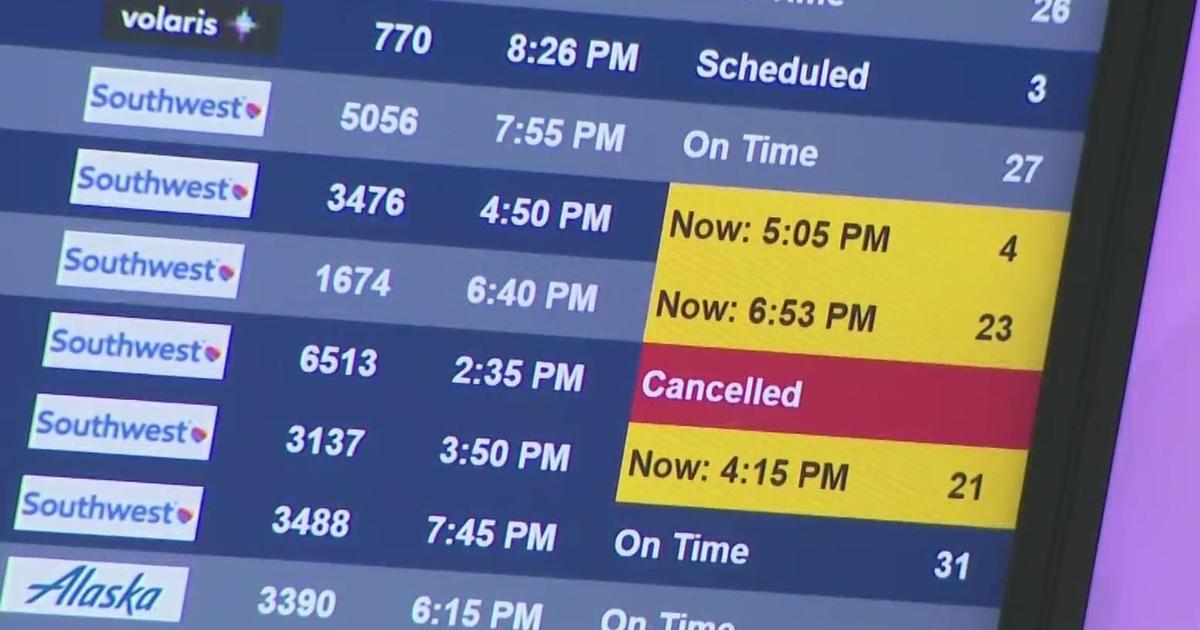New Workout Gets Attention From Bay Area Athletes, NASA
MOUNTAIN VIEW (CBS 5) – Exercise programs that make bold claims is nothing new. But a new kind of workout has grabbed the attention of Bay Area athletes, rescuers and NASA scientists.
Amidst the Velcro, hoses, and pain, may be the future of fitness. It's called Vasper, short for vascular performance. The workouts are the brainchild of Peter Wasowski.
"As you can see I'm not a fitness buff," Wasowski said, laughing.
During hard workouts, lactic acid builds in one's muscles, causing a burning sensation. That triggers the release of human growth hormones and other biochemicals. Vasper claims its pressure cuffs trap lactic acid in your quads and biceps, tricking your body into thinking its working a lot harder than it really is.
"As we build up huge amounts of lactic acid, we're sending a false signal to the brain. Like hacking the brain, telling the brain that we've destroyed all this muscle tissue when in fact, we haven't," Wasowski said. "The brain doesn't know that, it releases all this growth hormone to rebuild all this muscle tissue."
The compression cuffs, vest, footpads, and helmet are chilled down to as low as 40 degrees. It creates a strange feeling of simultaneous burning and cooling. As a result, Vasper said clients can push themselves a lot harder without sweating. Trainers guide clients through the interval workouts, consisting of six 30-second intensive "sprints," with rests in between.
After the workout, Wasowski said the body is flush with human growth hormones, promising better sleep, and faster recovery. Wasowski's big claim: two hours worth of exercise in just 20 minutes.
The San Jose Sharks tested Vasper for two months last summer. Patrick Marelau, the team's all-time leading scorer, liked the workouts so much he's now an investor, appearing on the company's homepage.
"When I did Vasper before my workouts, I had some of my best workouts. I went and did weightlifting after that. I can maybe compare it to like a runner's high. It's unbelievable," said Marleau.
Vasper continued testing with the California Air National Guard 131st Rescue Squadron, based at Moffett Field in Mountain View. Dubbed pararescuers, the 131st is tasked with conducting risky missions around the world.
Test subjects, such as Tech Sergeant Chris Klaftenegger, used the machine for weeks, and said lab results showed his levels of human growth hormone and testosterone rose significantly.
"I'm a believer in that I'm optimistic. I want to see it help the most amount of people," said Klaftenegger.
All this has caught the attention of Dr. Jeffrey Smith at NASA Ames Research Center in Mountain View. Smith studies the human body's adaptation to weightlessness.
Smith said astronauts aboard the International Space Station spend four hours exercising every day to prevent muscle and bone loss. The agency is studying how to reduce that time, and has begun a partnership with Vasper to conduct human research studies.
"I thought this is something that has aspects that could be useful to NASA. We're not here to endorse them, but we want to understand what they're doing, how it's scientifically possible, and what the potential of this technology might be for NASA," Smith said.
Vasper opened its doors to the public this month with workouts starting at $35 a session. Wasowski said the system won't replace traditional exercises, such as running and weightlifting. But rather, Wasowski claimed his workouts are a "fantastic" complement to them.
(Copyright 2012 by CBS San Francisco. All Rights Reserved. This material may not be published, broadcast, rewritten, or redistributed.)



